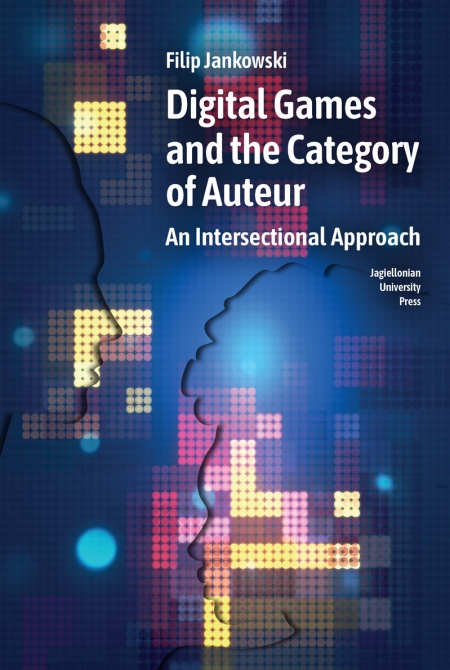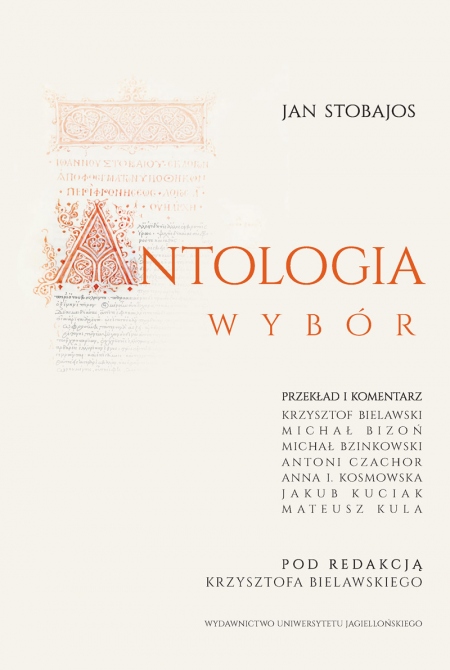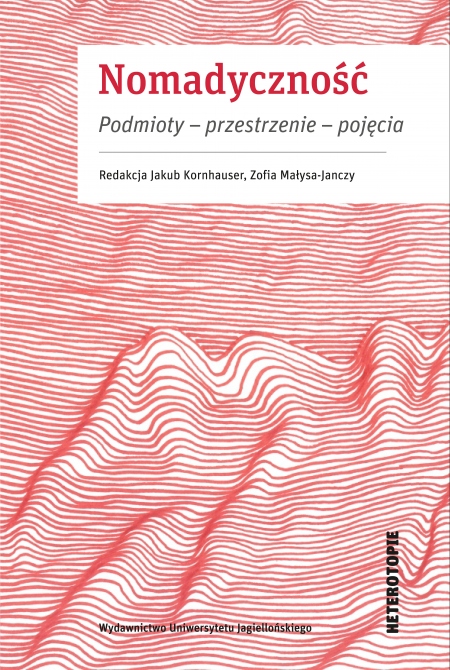Prepositional Network Models
A hermeneutical case study
Liczba stron: 194
Format: PDF
Rok wydania: 2009
Data premiery: 01.10.2009
Opis książki
Primarily, it presents an ongoing debate in cognitive linguistics about the modelling of prepositional polysemy, known as "the story of over". Additionally, it discusses a Polish counterpart - "the story of za(-)" (a preposition and a verbal prefix). Its further aim is to reveal a deep divergence of perspectives between the cognitive and hermeneutical approaches to the meaning of words. The argument could be summarised as follows: the issue of the representation of lexical senses (available out of context) presupposes the issue of distinct meanings of words in communal use, which in turn presupposes the question of the transformative power of words (in linguistics, articulated by Humboldt as energeia). In short, the book proposes to complement a post hoc static cognitive approach with a dynamic "expressive" one.
Andrzej Pawelec teaches cognitive linguistics and translation in the Institute of English Philology, Jagiellonian University, Krakow. His research, in general, is focused on the communal background of symbolic meaning. In linguistics, he aims to probe current theories from the vantage point provided by the "expressive" conception of language, as developed in philosophical hermeneutics (Merleau-Ponty and Charles Taylor being his main sources of inspiration). He has published two books so far. In Znaczenie ucieleśnione (2005) ["Embodied meaning"], he opposes the cognitive position on the "embodiment of meaning", as described by Lakoff and his associates, to the hermeneutical interpretation of this notion in terms of articulation. In Metafora pojęciowa a tradycja (2006) ["Conceptual metaphor and tradition"], he offers a critique of the cognitive theory of metaphor in terms of the "interactive theory" and the "Romantic tradition".
Andrzej Pawelec teaches cognitive linguistics and translation in the Institute of English Philology, Jagiellonian University, Krakow. His research, in general, is focused on the communal background of symbolic meaning. In linguistics, he aims to probe current theories from the vantage point provided by the "expressive" conception of language, as developed in philosophical hermeneutics (Merleau-Ponty and Charles Taylor being his main sources of inspiration). He has published two books so far. In Znaczenie ucieleśnione (2005) ["Embodied meaning"], he opposes the cognitive position on the "embodiment of meaning", as described by Lakoff and his associates, to the hermeneutical interpretation of this notion in terms of articulation. In Metafora pojęciowa a tradycja (2006) ["Conceptual metaphor and tradition"], he offers a critique of the cognitive theory of metaphor in terms of the "interactive theory" and the "Romantic tradition".
Autorzy
Andrzej Pawelec
ISBN: 978-83-233-2868-1
e-ISBN (pdf): 978-83-233-8553-0
Kraj pochodzenia producenta: Polska
POLECANE KSIĄŻKI
75,00
zł
60,00
zł
105,00
zł
84,00
zł
NOWOŚCI

Prepositional Network Models
A hermeneutical case study
SPIS TREŚCI
CONTENTS
INTRODUCTION 7
CHAPTER 0. THE HERMENEUTICAL SITUATION 17
0.0. Introductory remarks 17
0.1. The hermeneutical perspective 17
0.2. Prototype effects and categorization 22
0.3. Cognitive linguistics as prototype semantics 34
0.4. The intractability of polysemy 42
0.5. A recapitulation 51
CHAPTER 1. NETWORK MODELS: FOUNDATIONAL ACCOUNTS 55
1.0. Introductory remarks 55
1.1. Motivations behind the Langackerian and Lakoffian model 57
1.2. Schematic networks 61
1.2.1. A resume of Langacker’s position 61
1.2.2. A discussion 66
1.3. Radial categories 70
1.3.1. A resume of Lakoff’s radial model of over 72
1.3.2. A critique 75
1.4. Concluding remarks 77
CHAPTER 2. THE STORY OF over 81
2.0. Introductory remarks 81
2.1. A consistently imagistic model 81
2.2. A three-level account 85
2.3. A principled polysemy network 88
2.4. The case of (all) over 98
2.5. A discussion 102
CHAPTER 3. THE STORY OF za(-) 107
3.0. Introductory remarks 107
3.1. A network model of the preposition za 108
3.2. A network model of the verbal prefix za- 114
3.3. Some diachronic observations on the prefix za- 118
3.4. A discussion 125
CHAPTER 4. COGNITIVE “DIACHRONY WITHIN SYNCHRONY”? 131
4.0. Introductory remarks 131
4.1. Saussure: synchrony vs. diachrony 131
4.2. Logical diachrony: the case of “length, width, and potential passing” 135
4.3. The status of network models 143
CHAPTER 5. THE HERMENEUTICAL CODA 151
5.0. Introductory remarks 151
5.1. Language, thought, and reality 152
5.1.1. Teaching chimps symbols 157
5.1.2. The mimetic origins of language 162
5.1.3. First words of a child 165
5.1.4. Words as “stopping orders” 166
5.1.5. The Sapir-Whorf hypothesis 167
5.2. The formalism of linguistics: a Gadamerian view 172
5.3. A plea for “expressive” linguistics 176
REFERENCES 181
INTRODUCTION 7
CHAPTER 0. THE HERMENEUTICAL SITUATION 17
0.0. Introductory remarks 17
0.1. The hermeneutical perspective 17
0.2. Prototype effects and categorization 22
0.3. Cognitive linguistics as prototype semantics 34
0.4. The intractability of polysemy 42
0.5. A recapitulation 51
CHAPTER 1. NETWORK MODELS: FOUNDATIONAL ACCOUNTS 55
1.0. Introductory remarks 55
1.1. Motivations behind the Langackerian and Lakoffian model 57
1.2. Schematic networks 61
1.2.1. A resume of Langacker’s position 61
1.2.2. A discussion 66
1.3. Radial categories 70
1.3.1. A resume of Lakoff’s radial model of over 72
1.3.2. A critique 75
1.4. Concluding remarks 77
CHAPTER 2. THE STORY OF over 81
2.0. Introductory remarks 81
2.1. A consistently imagistic model 81
2.2. A three-level account 85
2.3. A principled polysemy network 88
2.4. The case of (all) over 98
2.5. A discussion 102
CHAPTER 3. THE STORY OF za(-) 107
3.0. Introductory remarks 107
3.1. A network model of the preposition za 108
3.2. A network model of the verbal prefix za- 114
3.3. Some diachronic observations on the prefix za- 118
3.4. A discussion 125
CHAPTER 4. COGNITIVE “DIACHRONY WITHIN SYNCHRONY”? 131
4.0. Introductory remarks 131
4.1. Saussure: synchrony vs. diachrony 131
4.2. Logical diachrony: the case of “length, width, and potential passing” 135
4.3. The status of network models 143
CHAPTER 5. THE HERMENEUTICAL CODA 151
5.0. Introductory remarks 151
5.1. Language, thought, and reality 152
5.1.1. Teaching chimps symbols 157
5.1.2. The mimetic origins of language 162
5.1.3. First words of a child 165
5.1.4. Words as “stopping orders” 166
5.1.5. The Sapir-Whorf hypothesis 167
5.2. The formalism of linguistics: a Gadamerian view 172
5.3. A plea for “expressive” linguistics 176
REFERENCES 181
SPIS TREŚCI
CONTENTS
INTRODUCTION 7
CHAPTER 0. THE HERMENEUTICAL SITUATION 17
0.0. Introductory remarks 17
0.1. The hermeneutical perspective 17
0.2. Prototype effects and categorization 22
0.3. Cognitive linguistics as prototype semantics 34
0.4. The intractability of polysemy 42
0.5. A recapitulation 51
CHAPTER 1. NETWORK MODELS: FOUNDATIONAL ACCOUNTS 55
1.0. Introductory remarks 55
1.1. Motivations behind the Langackerian and Lakoffian model 57
1.2. Schematic networks 61
1.2.1. A resume of Langacker’s position 61
1.2.2. A discussion 66
1.3. Radial categories 70
1.3.1. A resume of Lakoff’s radial model of over 72
1.3.2. A critique 75
1.4. Concluding remarks 77
CHAPTER 2. THE STORY OF over 81
2.0. Introductory remarks 81
2.1. A consistently imagistic model 81
2.2. A three-level account 85
2.3. A principled polysemy network 88
2.4. The case of (all) over 98
2.5. A discussion 102
CHAPTER 3. THE STORY OF za(-) 107
3.0. Introductory remarks 107
3.1. A network model of the preposition za 108
3.2. A network model of the verbal prefix za- 114
3.3. Some diachronic observations on the prefix za- 118
3.4. A discussion 125
CHAPTER 4. COGNITIVE “DIACHRONY WITHIN SYNCHRONY”? 131
4.0. Introductory remarks 131
4.1. Saussure: synchrony vs. diachrony 131
4.2. Logical diachrony: the case of “length, width, and potential passing” 135
4.3. The status of network models 143
CHAPTER 5. THE HERMENEUTICAL CODA 151
5.0. Introductory remarks 151
5.1. Language, thought, and reality 152
5.1.1. Teaching chimps symbols 157
5.1.2. The mimetic origins of language 162
5.1.3. First words of a child 165
5.1.4. Words as “stopping orders” 166
5.1.5. The Sapir-Whorf hypothesis 167
5.2. The formalism of linguistics: a Gadamerian view 172
5.3. A plea for “expressive” linguistics 176
REFERENCES 181
INTRODUCTION 7
CHAPTER 0. THE HERMENEUTICAL SITUATION 17
0.0. Introductory remarks 17
0.1. The hermeneutical perspective 17
0.2. Prototype effects and categorization 22
0.3. Cognitive linguistics as prototype semantics 34
0.4. The intractability of polysemy 42
0.5. A recapitulation 51
CHAPTER 1. NETWORK MODELS: FOUNDATIONAL ACCOUNTS 55
1.0. Introductory remarks 55
1.1. Motivations behind the Langackerian and Lakoffian model 57
1.2. Schematic networks 61
1.2.1. A resume of Langacker’s position 61
1.2.2. A discussion 66
1.3. Radial categories 70
1.3.1. A resume of Lakoff’s radial model of over 72
1.3.2. A critique 75
1.4. Concluding remarks 77
CHAPTER 2. THE STORY OF over 81
2.0. Introductory remarks 81
2.1. A consistently imagistic model 81
2.2. A three-level account 85
2.3. A principled polysemy network 88
2.4. The case of (all) over 98
2.5. A discussion 102
CHAPTER 3. THE STORY OF za(-) 107
3.0. Introductory remarks 107
3.1. A network model of the preposition za 108
3.2. A network model of the verbal prefix za- 114
3.3. Some diachronic observations on the prefix za- 118
3.4. A discussion 125
CHAPTER 4. COGNITIVE “DIACHRONY WITHIN SYNCHRONY”? 131
4.0. Introductory remarks 131
4.1. Saussure: synchrony vs. diachrony 131
4.2. Logical diachrony: the case of “length, width, and potential passing” 135
4.3. The status of network models 143
CHAPTER 5. THE HERMENEUTICAL CODA 151
5.0. Introductory remarks 151
5.1. Language, thought, and reality 152
5.1.1. Teaching chimps symbols 157
5.1.2. The mimetic origins of language 162
5.1.3. First words of a child 165
5.1.4. Words as “stopping orders” 166
5.1.5. The Sapir-Whorf hypothesis 167
5.2. The formalism of linguistics: a Gadamerian view 172
5.3. A plea for “expressive” linguistics 176
REFERENCES 181
Wybierz rozdziały:
Wartość zamówienia:
0.00 zł






















